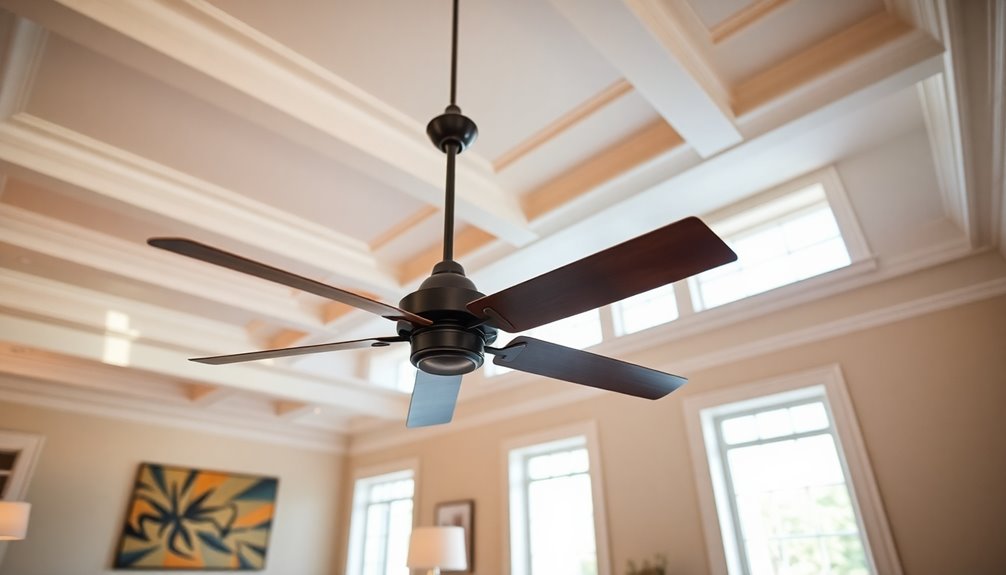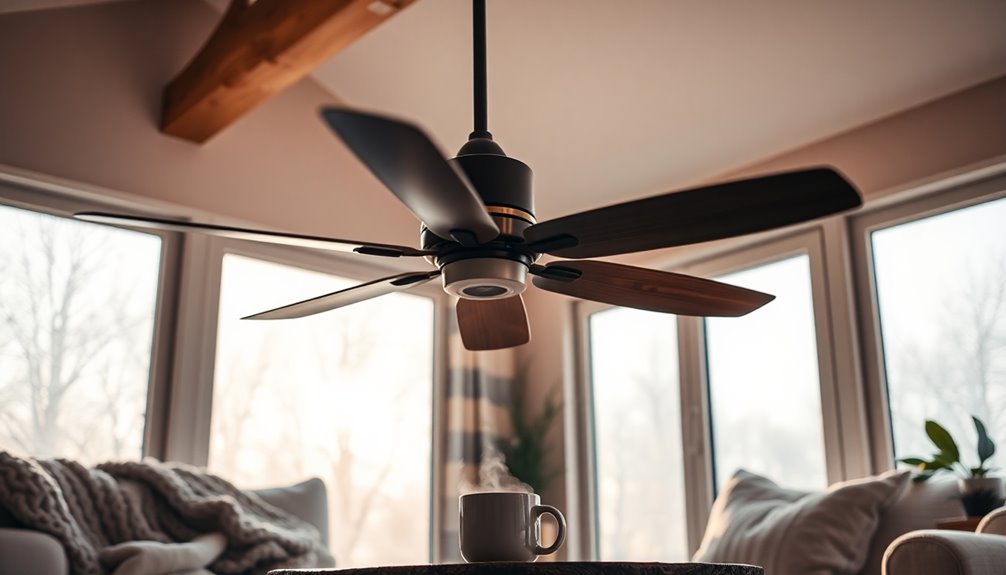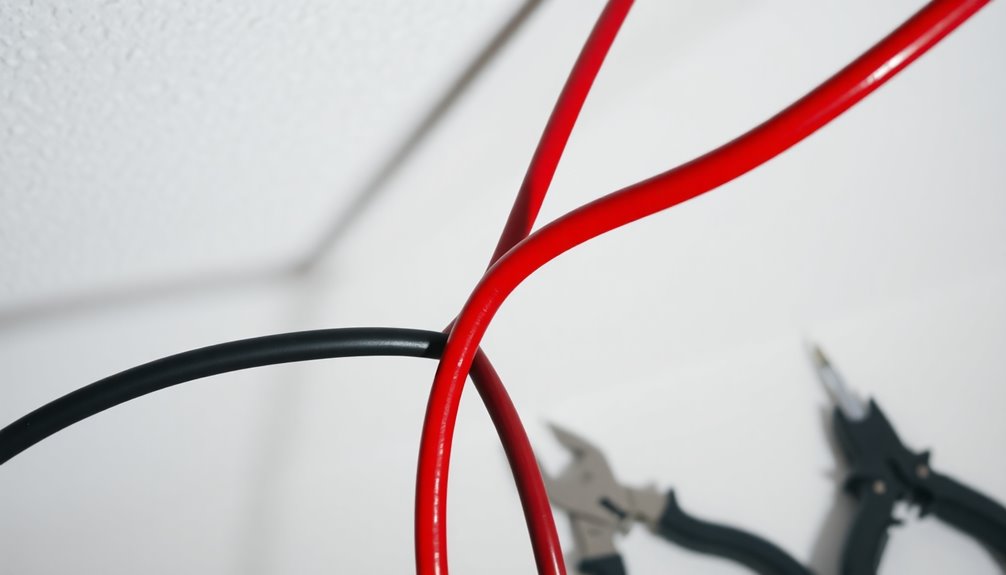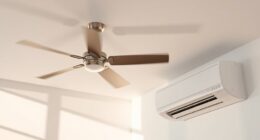A smart ceiling fan is an innovative appliance that combines cooling comfort with intelligent technology. You can control it remotely through mobile apps or voice commands, giving you convenience at your fingertips. These fans typically connect via Wi-Fi, enabling you to manage them from anywhere. Many models are ENERGY STAR® certified, meaning they can save you up to 64% on energy usage compared to traditional fans. With features like occupancy sensors and automated temperature adjustments, smart ceiling fans enhance your home's efficiency. If you're curious about the benefits and installation options, you'll find even more helpful insights ahead.
Key Takeaways
- Smart ceiling fans are energy-efficient fans that can be controlled remotely via mobile apps and voice commands.
- They integrate with smart home systems, providing enhanced comfort and automation features based on temperature and humidity.
- Many models are ENERGY STAR® certified, potentially saving up to 64% more energy compared to traditional fans.
- Smart fans can include sensors for occupancy, allowing them to adjust operation to reduce energy waste.
- Installation is similar to traditional fans, but optimal functionality requires Wi-Fi connectivity and app setup.
Overview of Smart Ceiling Fans
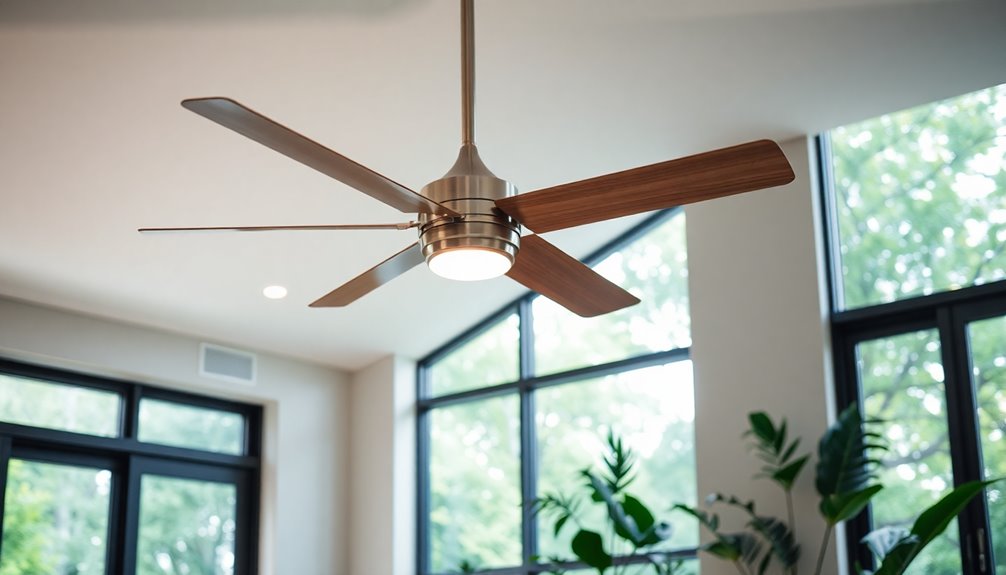
As you look to improve your home's comfort and efficiency, smart ceiling fans stand out as a modern solution. These innovative devices not only circulate air but also integrate seamlessly with your smart home systems, allowing you to control your ceiling fan through mobile apps or voice commands.
With Wi-Fi connectivity, you can manage your fan from anywhere, enhancing convenience.
One of the most appealing aspects of smart ceiling fans is their energy efficiency. ENERGY STAR® certified models can be up to 64% more efficient than traditional fans, which can lead to significant savings on cooling costs.
Their automation features allow the fan to adjust its operation based on environmental factors like temperature and humidity, maximizing comfort while minimizing energy use.
Moreover, many smart ceiling fans come equipped with LED lights, providing additional illumination without compromising energy savings.
Installation is similar to traditional ceiling fans, but you'll need to set up the Wi-Fi connection and integrate it with your smart home system for peak functionality.
Control Mechanisms and Types
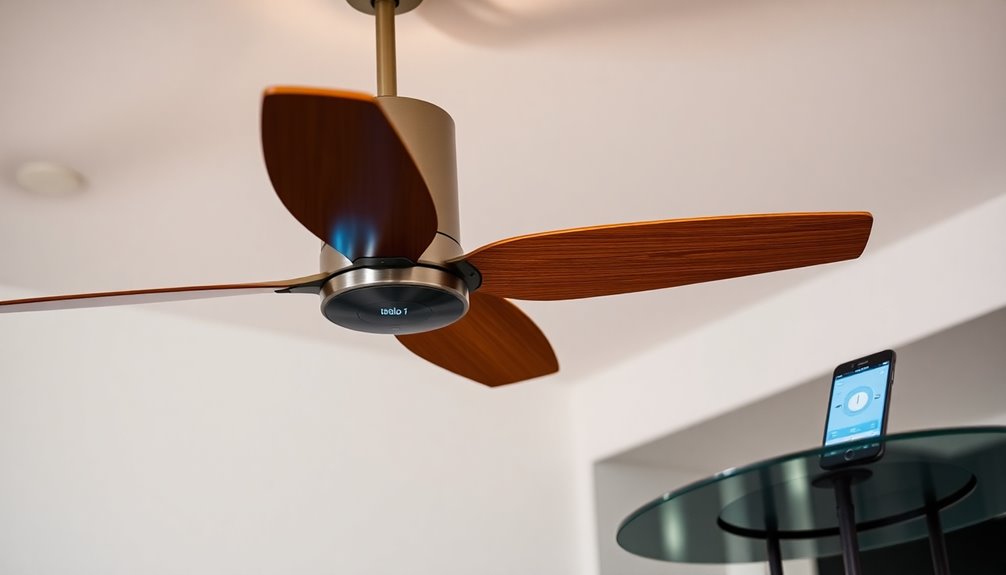
Smart ceiling fans come with a variety of control mechanisms that enhance your experience and convenience. You can choose between retrofit fans, which upgrade traditional models with smart capabilities, or new smart fans designed with integrated smart features from the outset.
These fans often include mobile apps that let you operate them remotely, making it easy to adjust settings from anywhere in your home. Voice control technologies, like Alexa and Google Home, offer another hands-free option for controlling your smart ceiling fans.
Many models come with built-in Wi-Fi, allowing seamless integration into your existing smart home system without the need for extra smart switches. Advanced features include sensors that detect temperature, humidity, and occupancy, enabling automation that adjusts the fan's performance based on environmental conditions.
Additionally, some smart fans support ten-speed variations and programmable settings, giving you complete control over fan speed and lighting according to your preferences throughout the day.
With these innovative control mechanisms, smart ceiling fans provide a level of customization and convenience that traditional fans simply can't match.
Benefits of Smart Ceiling Fans
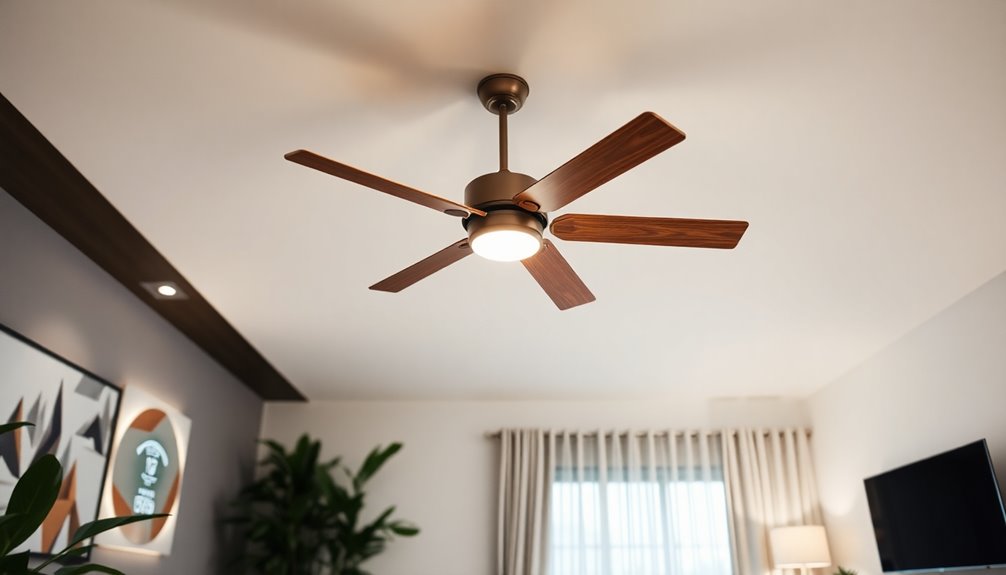
With the rise of energy-efficient technology, smart ceiling fans offer a range of benefits that go beyond simple air circulation.
You'll enjoy significant energy savings and enhanced comfort in your home. For instance, these ENERGY STAR® certified fans can lead to up to 11% savings on cooling costs by automatically turning off when no one's around.
Here are some key benefits of smart ceiling fans:
- Programmable Timers: Customize fan operation schedules for convenience and efficiency.
- Integrated Sensors: Detect presence and adjust settings for maximum comfort while reducing energy waste.
- Enhanced Security: Simulate occupancy to deter potential break-ins.
- Improved Efficiency: Operate at peak settings, being 64% more efficient than traditional models.
Installation and User Experience
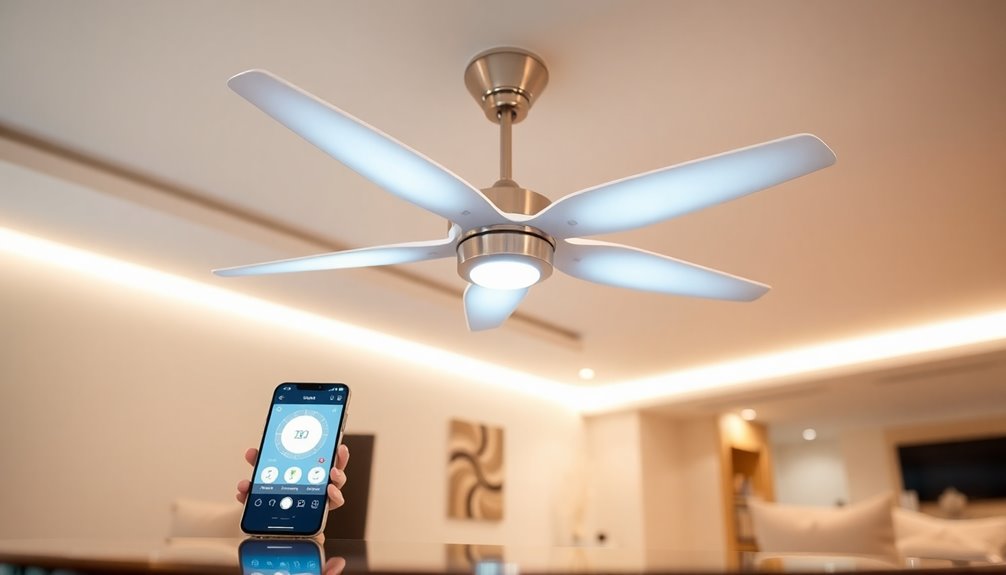
Installing a smart ceiling fan can be a straightforward process, much like setting up a traditional model. Many smart fans are designed for DIY setup, but if you're dealing with complex systems, you might want to contemplate professional installation. Once installed, connecting your fan to Wi-Fi and the corresponding mobile app is vital for maximizing features and remote control capabilities.
Here's a quick overview of the installation process and user experience:
| Step | Description | Tips |
|---|---|---|
| 1. Unbox the Fan | Carefully take out all components | Keep the manual handy |
| 2. Mount the Bracket | Attach the mounting bracket to the ceiling | Use a level for accuracy |
| 3. Connect Wires | Follow wiring instructions | Double-check connections |
| 4. Install Blades | Attach blades according to the manual | Verify they're secure |
| 5. Configure App | Connect to Wi-Fi and set up the app | Explore all features |
User experience improves markedly when you master the smart fan app, utilize voice commands, and keep up with regular software updates to access new features. Enjoy your new level of convenience!
Future Trends and Innovations
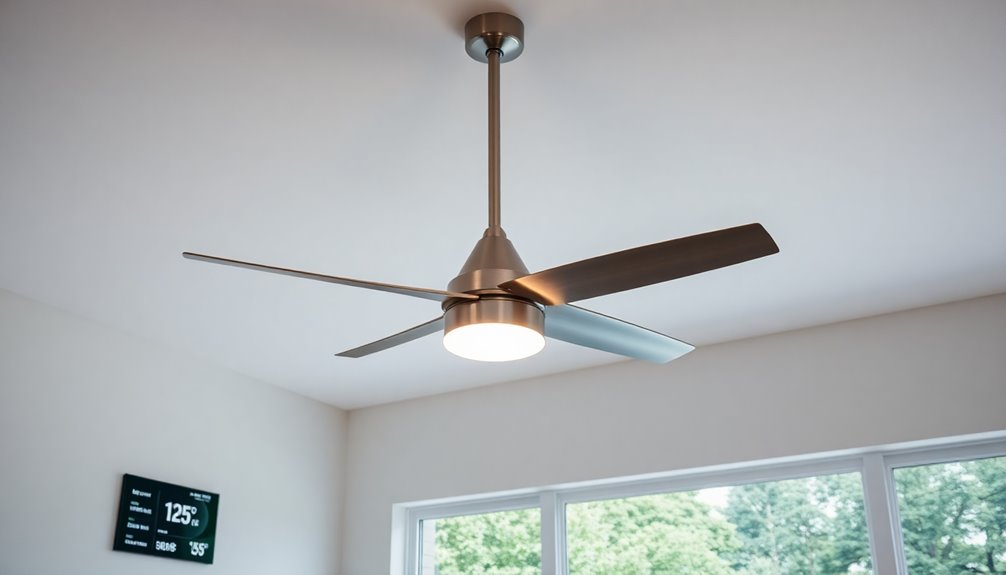
The future of ceiling fans looks promising, with several exciting trends and innovations set to transform how you experience home comfort. As smart ceiling fans continue to evolve, you can expect enhanced energy efficiency and automation features that make your life easier.
- Occupancy sensors: These will adjust fan settings automatically based on room usage, ensuring comfort without wasting energy.
- Geolocation technology: Fans will respond to your proximity, turning on or adjusting speeds when you're nearby.
- Improved connectivity options: Future designs will allow seamless communication with other smart home devices, creating an integrated home automation experience.
- Consumer awareness growth: As people become more aware of energy efficiency benefits, the adoption of smart ceiling fans will rise, leading to more sophisticated and affordable options.
With real-time temperature changes, smart ceiling fans will automatically adapt to your environment, maximizing comfort.
As these advancements unfold, your home will become a more intelligent space that prioritizes convenience and sustainability.
Embrace the future of home comfort with smart ceiling fans, designed to elevate your lifestyle while reducing your carbon footprint.
Frequently Asked Questions
What Does a Smart Ceiling Fan Do?
A smart ceiling fan adjusts its speed based on your home's temperature and humidity, helping you stay comfortable.
You can control it remotely using your mobile app or voice commands, making it easy to change settings from anywhere.
It also lets you set schedules and timers, saving energy when you're not home.
Plus, it can work with your HVAC system to optimize air circulation and efficiency, enhancing your overall comfort.
What Is the Difference Between a Smart Fan and a Normal Fan?
Did you know that smart ceiling fans can reduce energy consumption by up to 64% compared to traditional models?
The main difference lies in control and efficiency. With smart fans, you can adjust settings via your smartphone or voice commands, while normal fans require manual operation.
Smart fans also feature programmable settings and built-in sensors for temperature and occupancy, allowing them to adapt automatically, unlike regular fans that operate at a fixed speed.
Do Smart Ceiling Fans Need Electricity?
Yes, smart ceiling fans do need electricity to operate. They use electric motors to spin the blades and power their smart features.
Most of these fans employ energy-efficient DC motors, which consume less electricity than traditional fans. You'll typically connect them to a standard electrical outlet, and some might require wiring into your home's electrical system.
Can You Make Any Ceiling Fan a Smart Fan?
Imagine your ceiling fan as an ancient tree, rooted in tradition but yearning for modernity.
Yes, you can transform any ceiling fan into a smart fan! By using retrofit solutions like smart switches or adapters, you'll breathe new life into your fan, allowing it to connect with your smartphone or voice assistants.
While it won't match the capabilities of new smart fans entirely, it'll still bring convenience and efficiency to your home.
Conclusion
In the world of home comfort, smart ceiling fans are your gentle breeze, seamlessly blending technology with style. They dance to your commands, adjusting to your needs while saving energy like a wise old owl. As you embrace this innovation, picture a future where your living space adapts effortlessly, creating a harmonious atmosphere. So, let these fans whirl above you, transforming your home into a cool sanctuary, where convenience and elegance twirl hand in hand.


